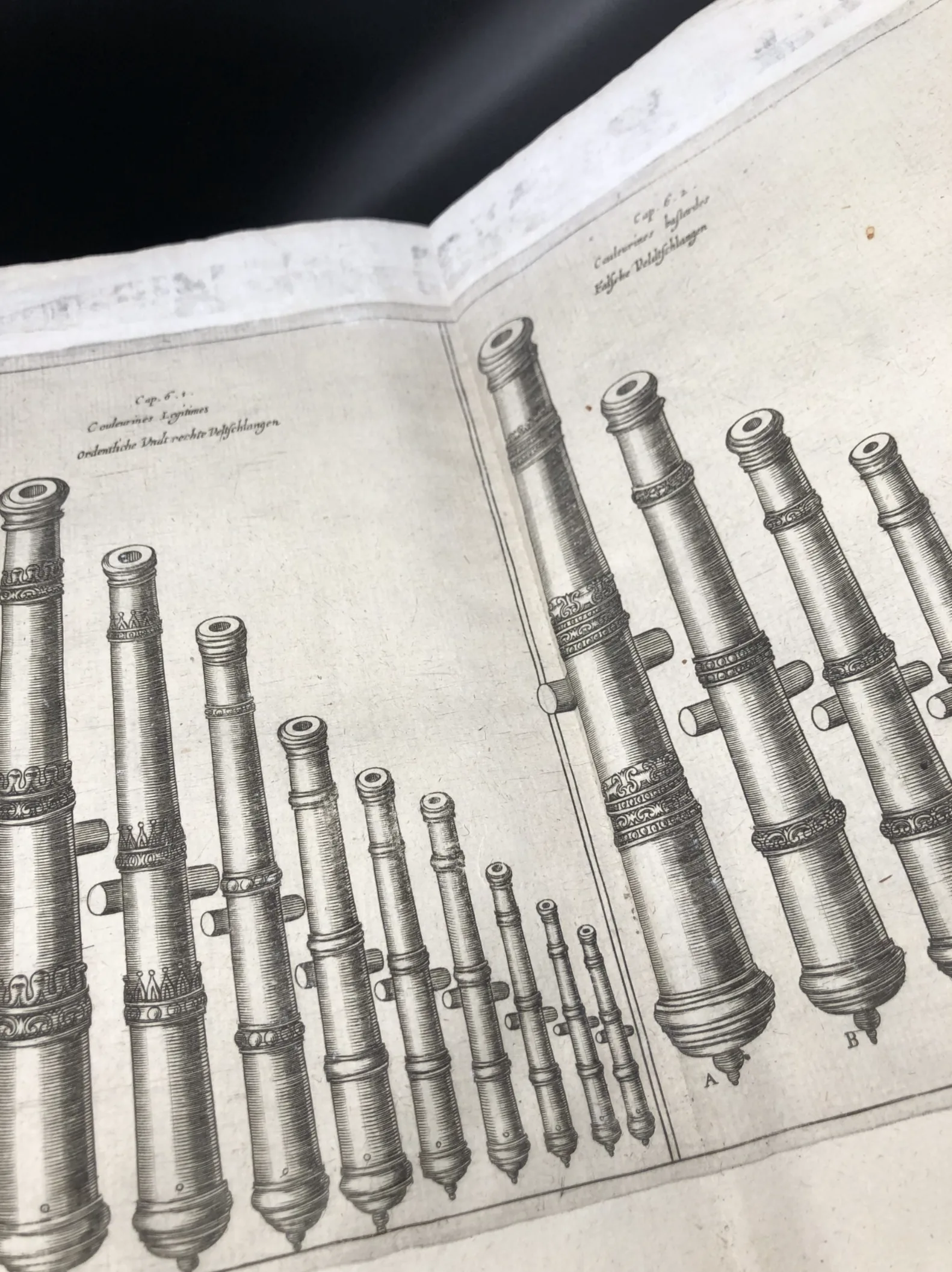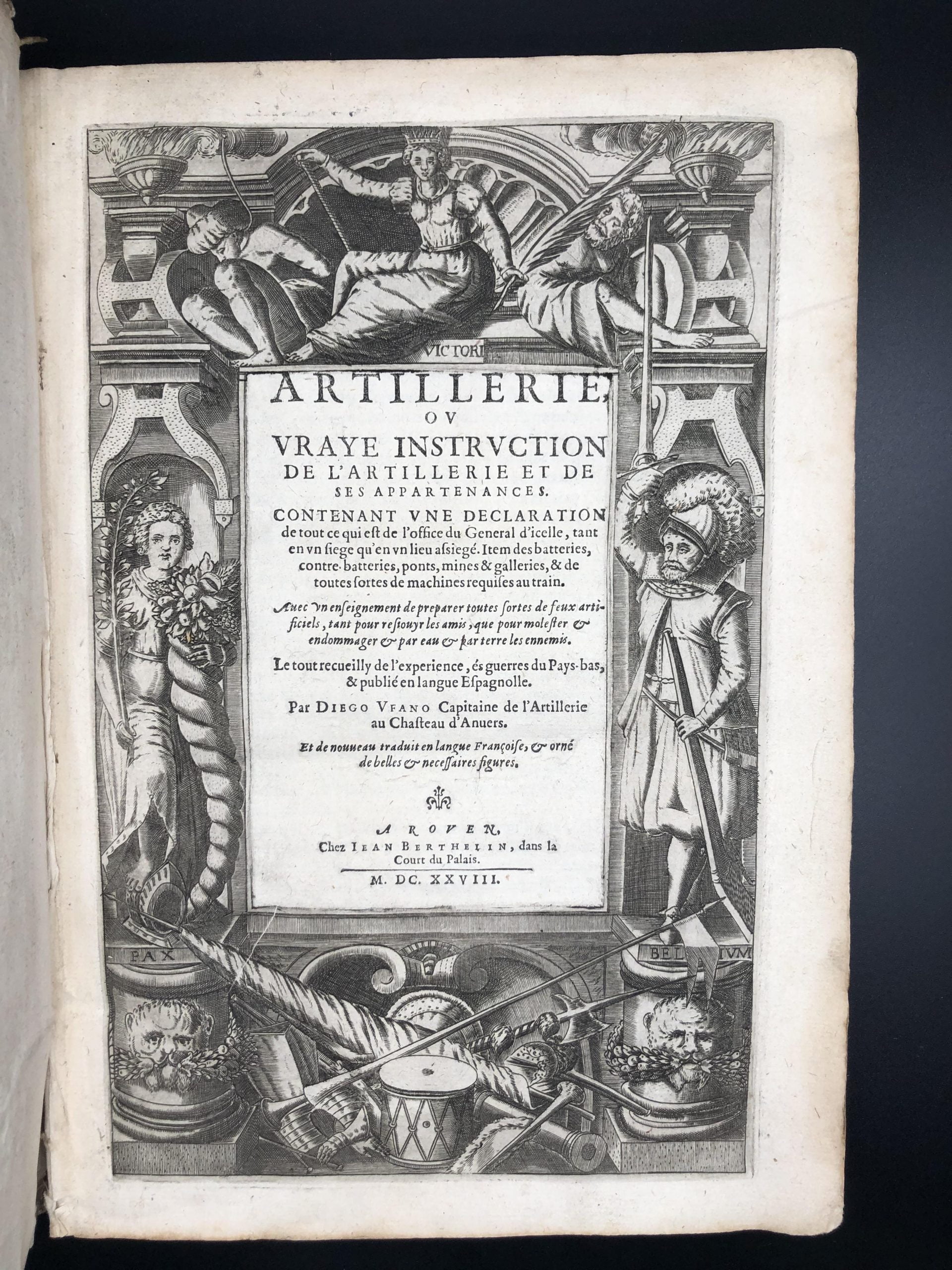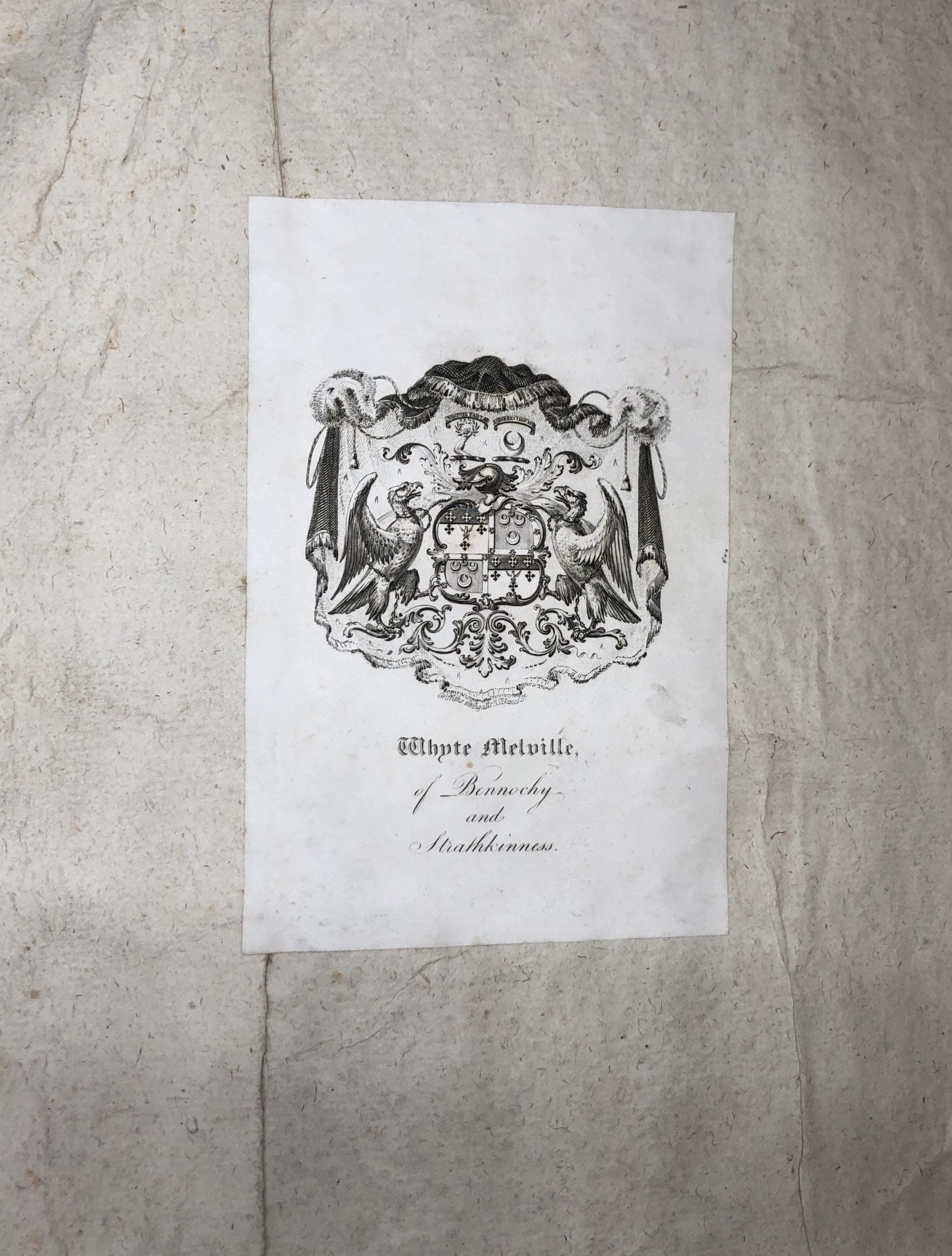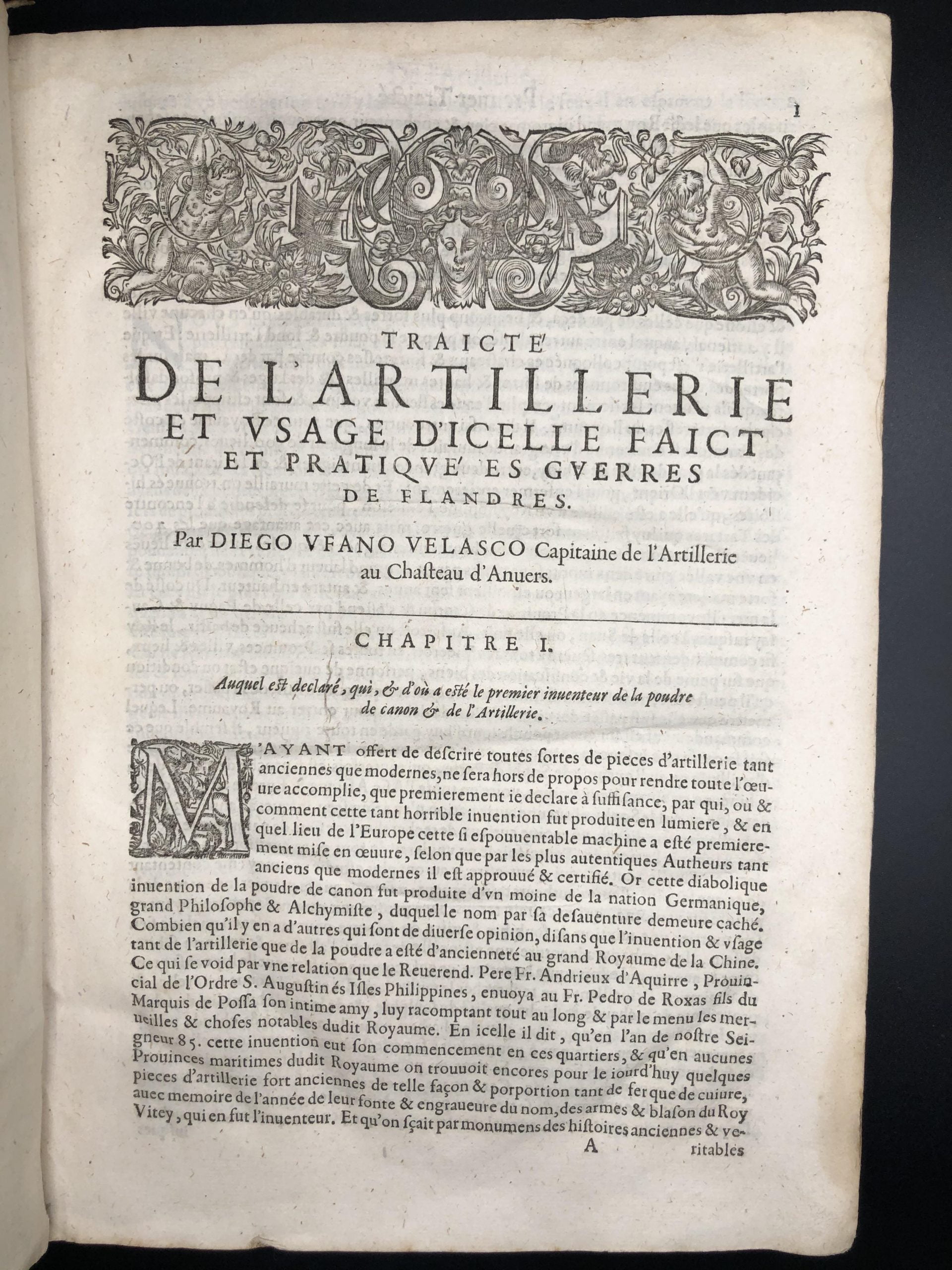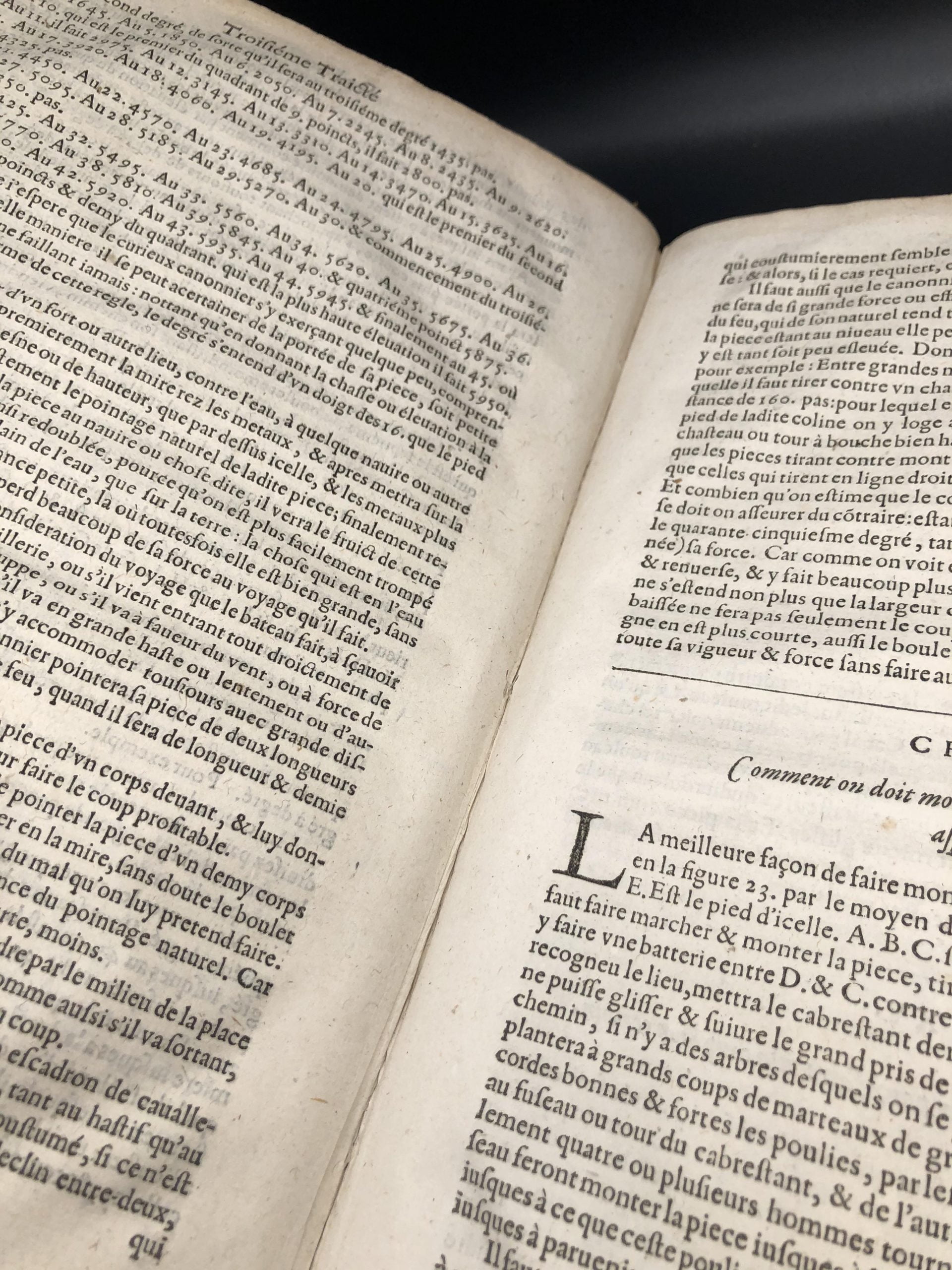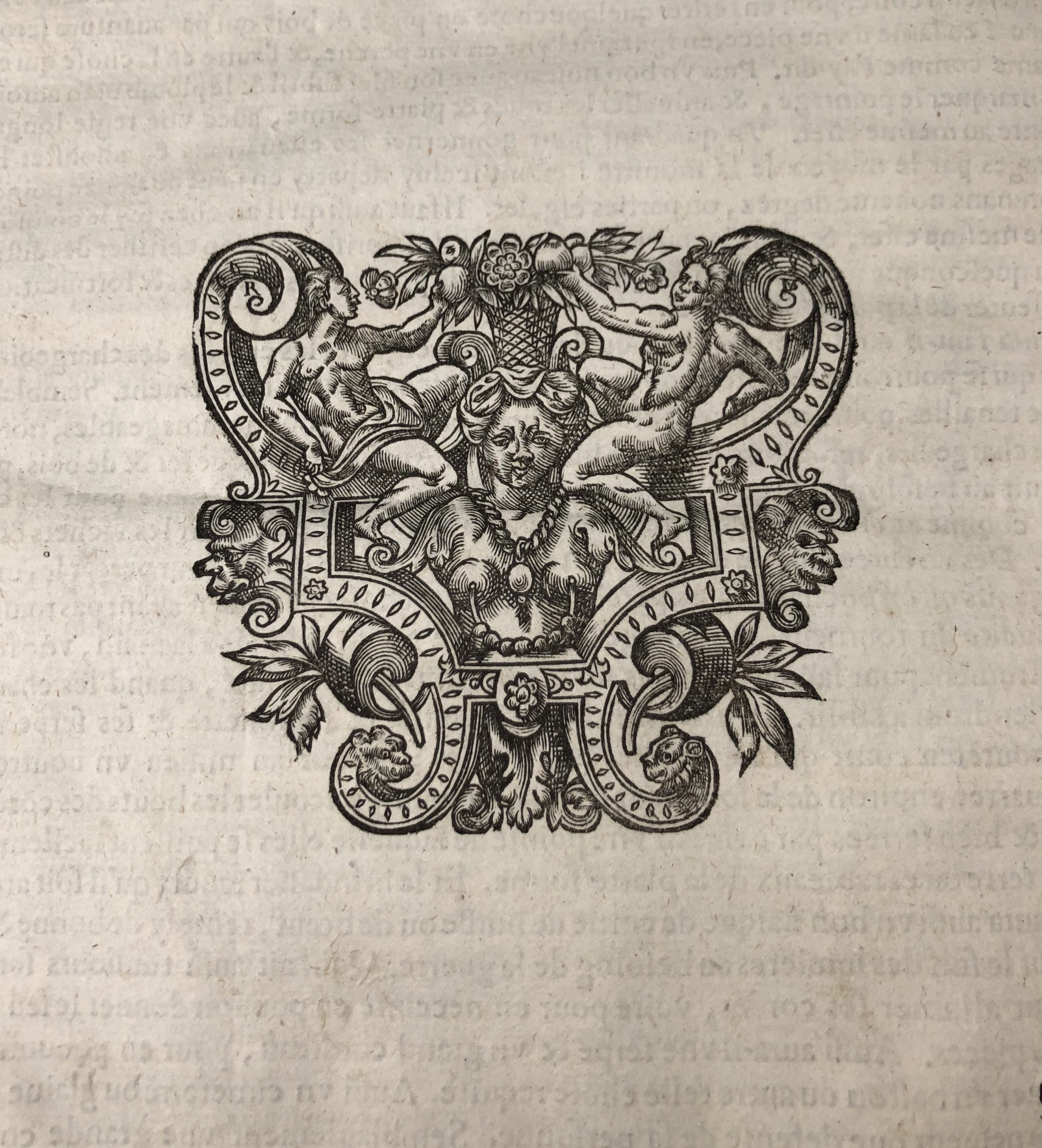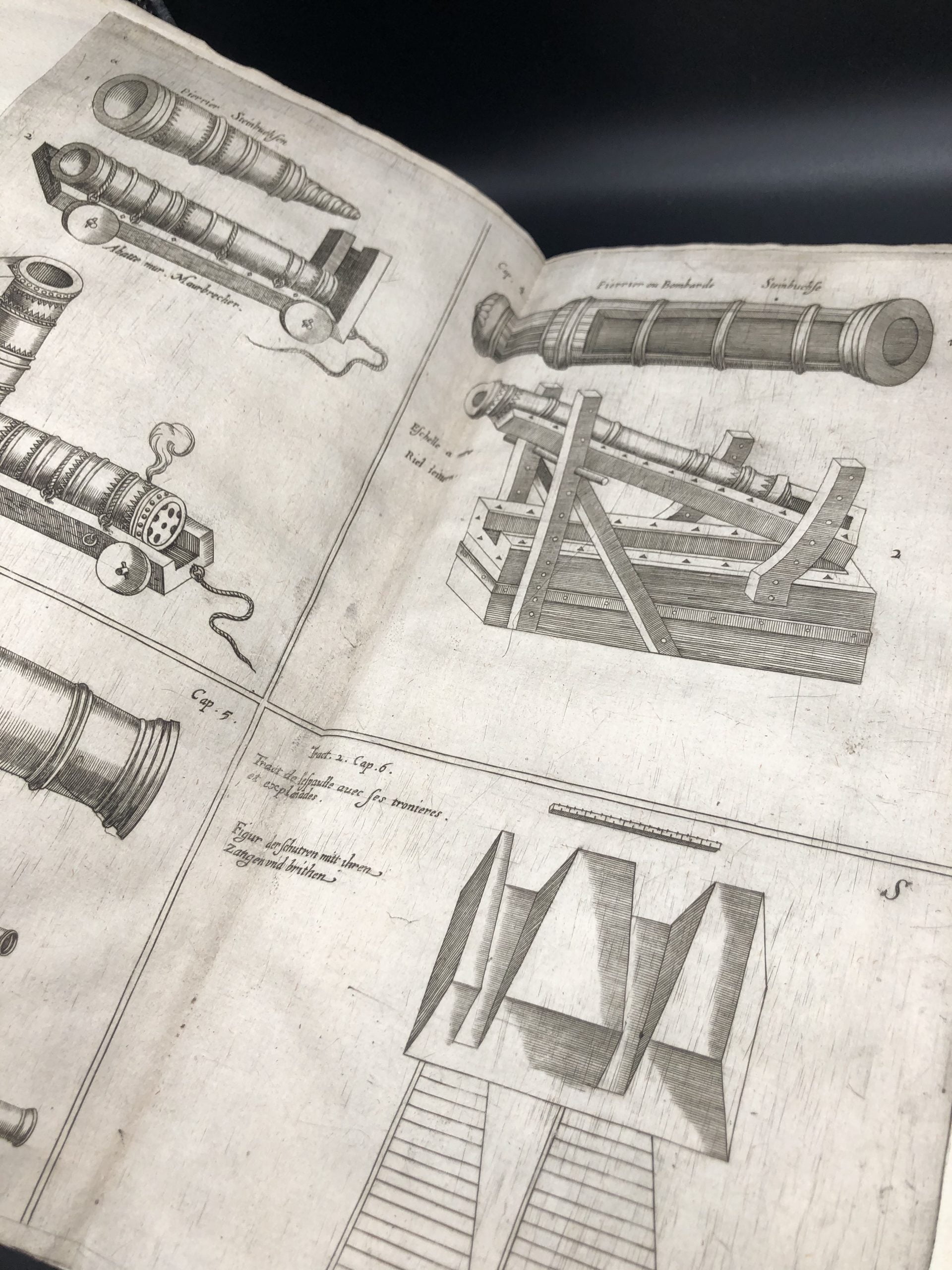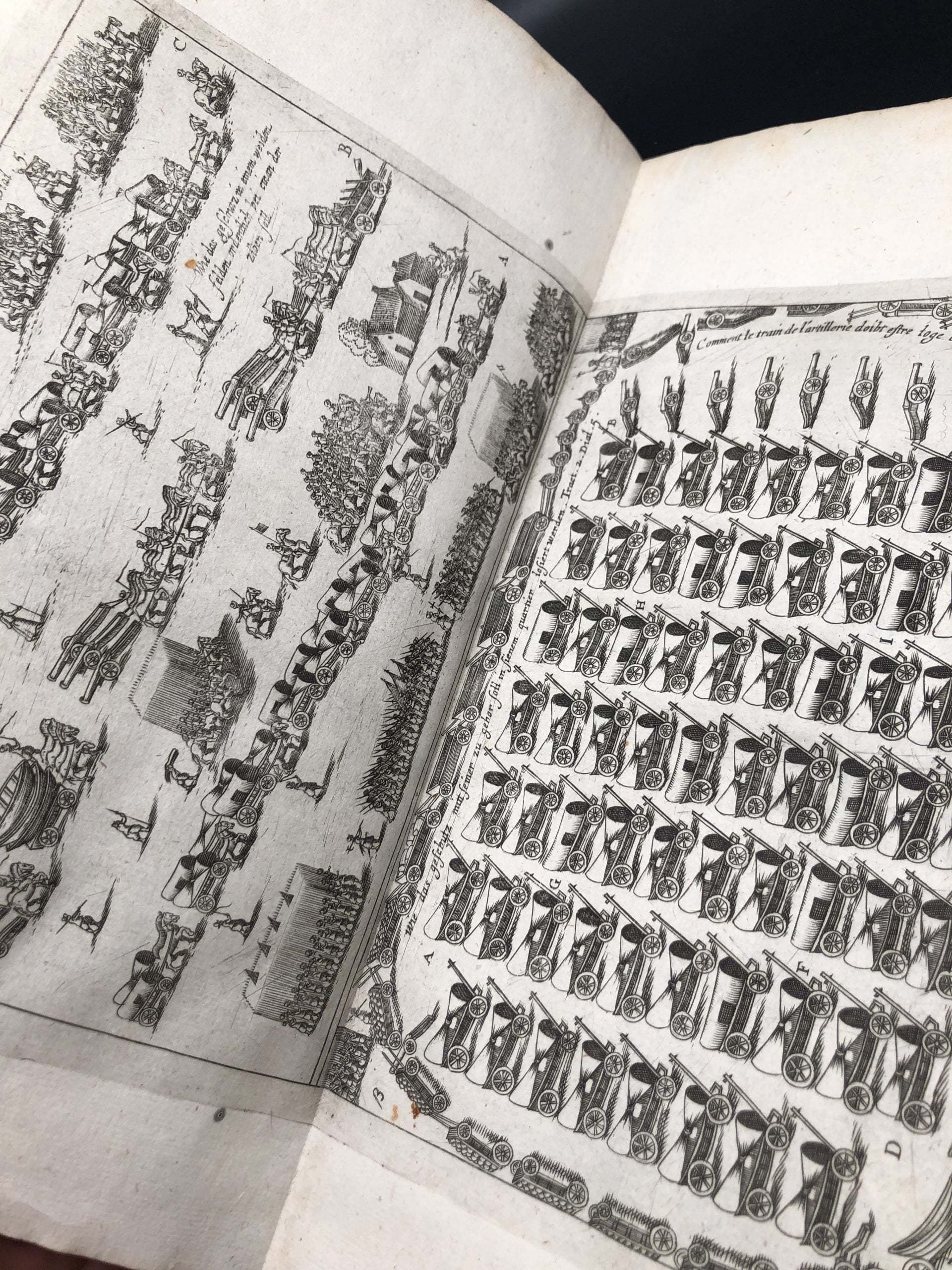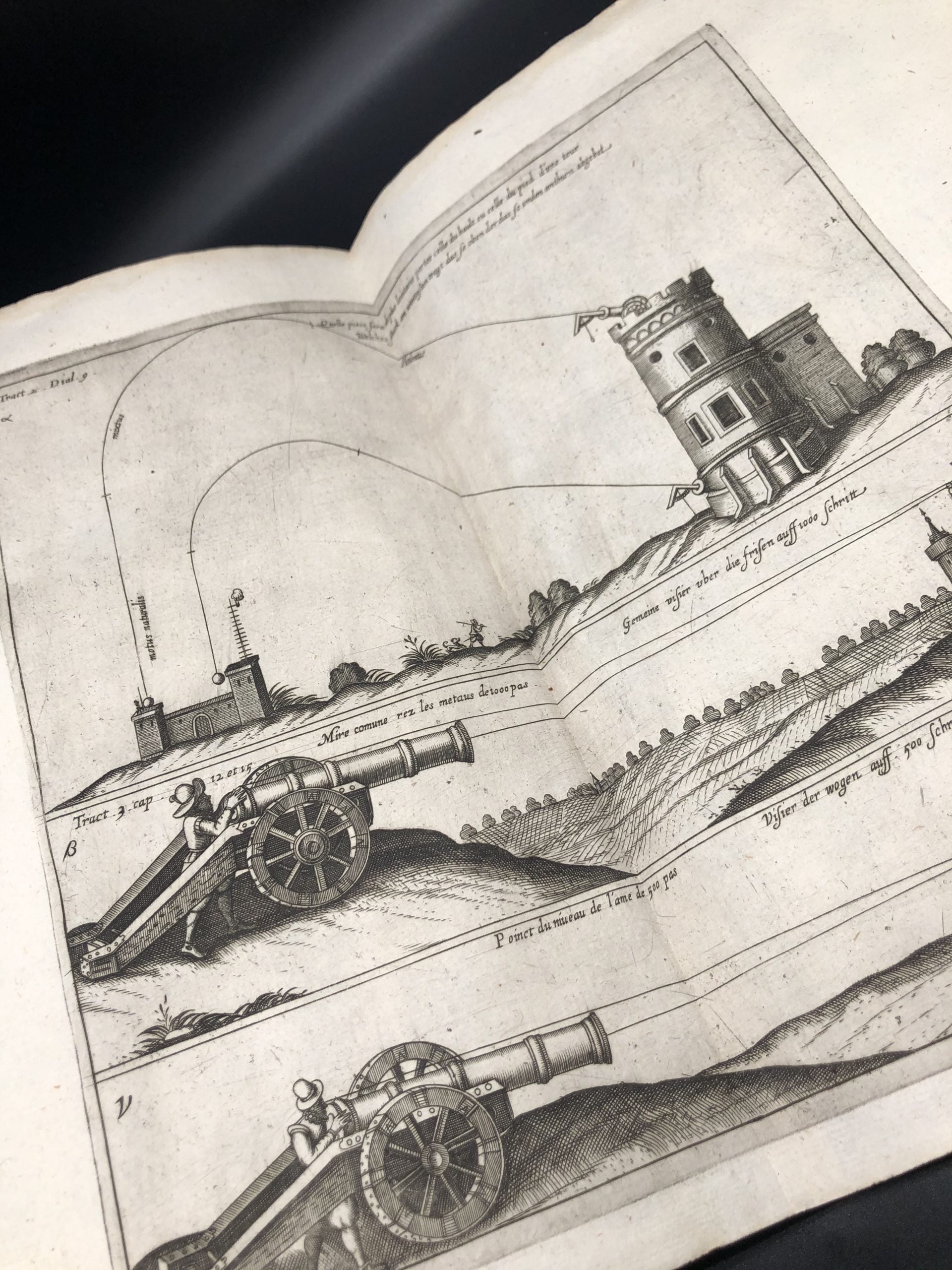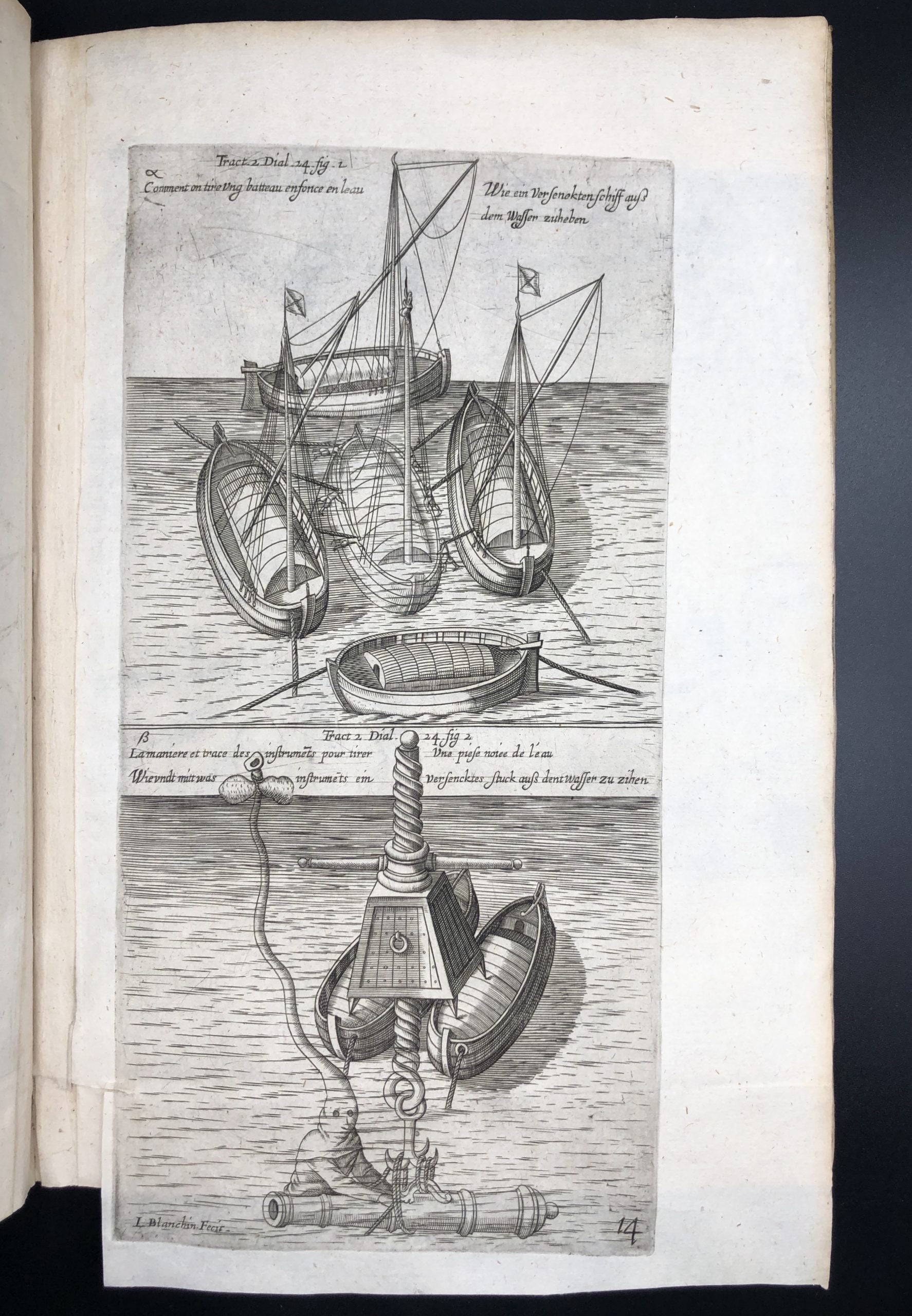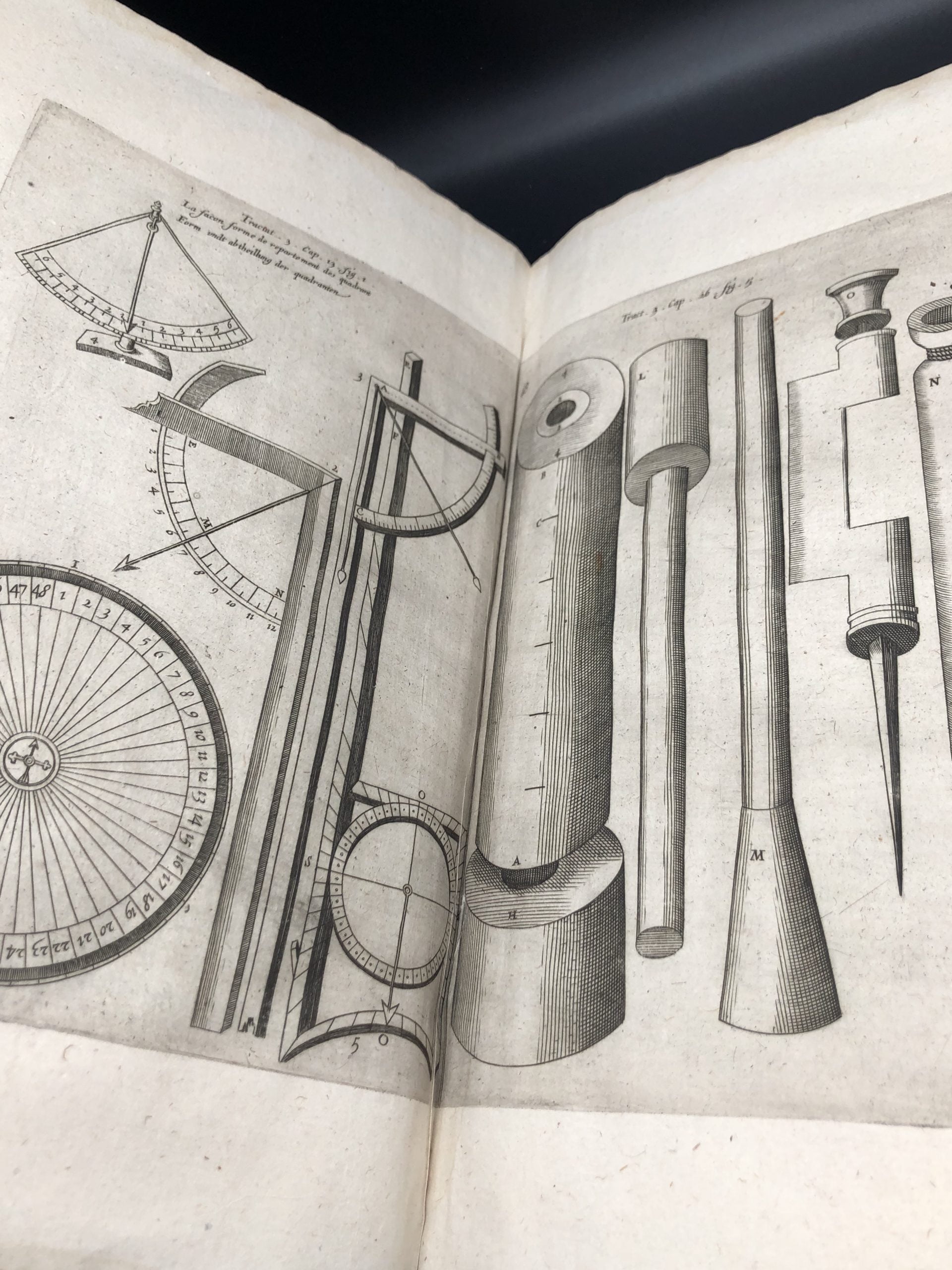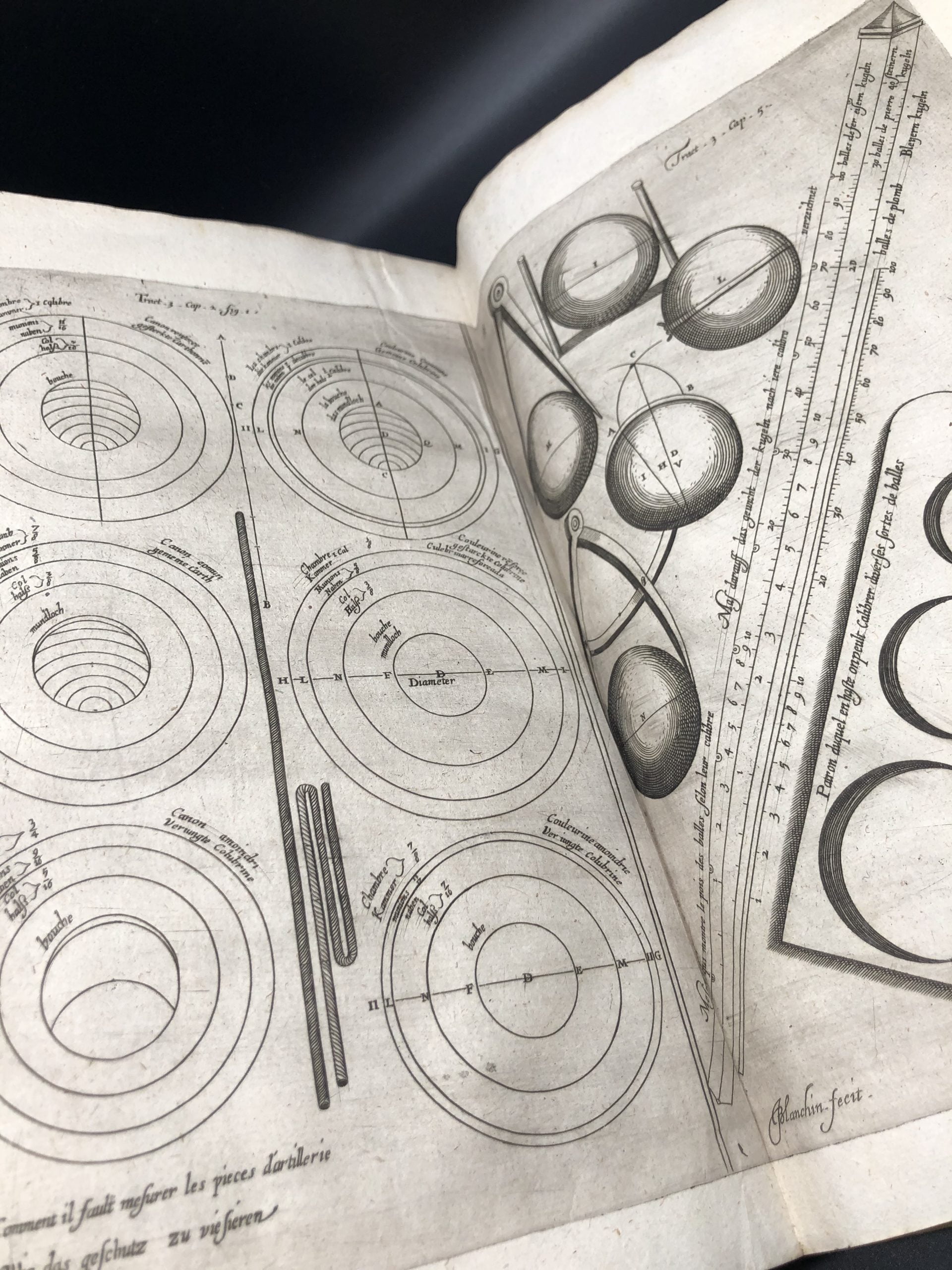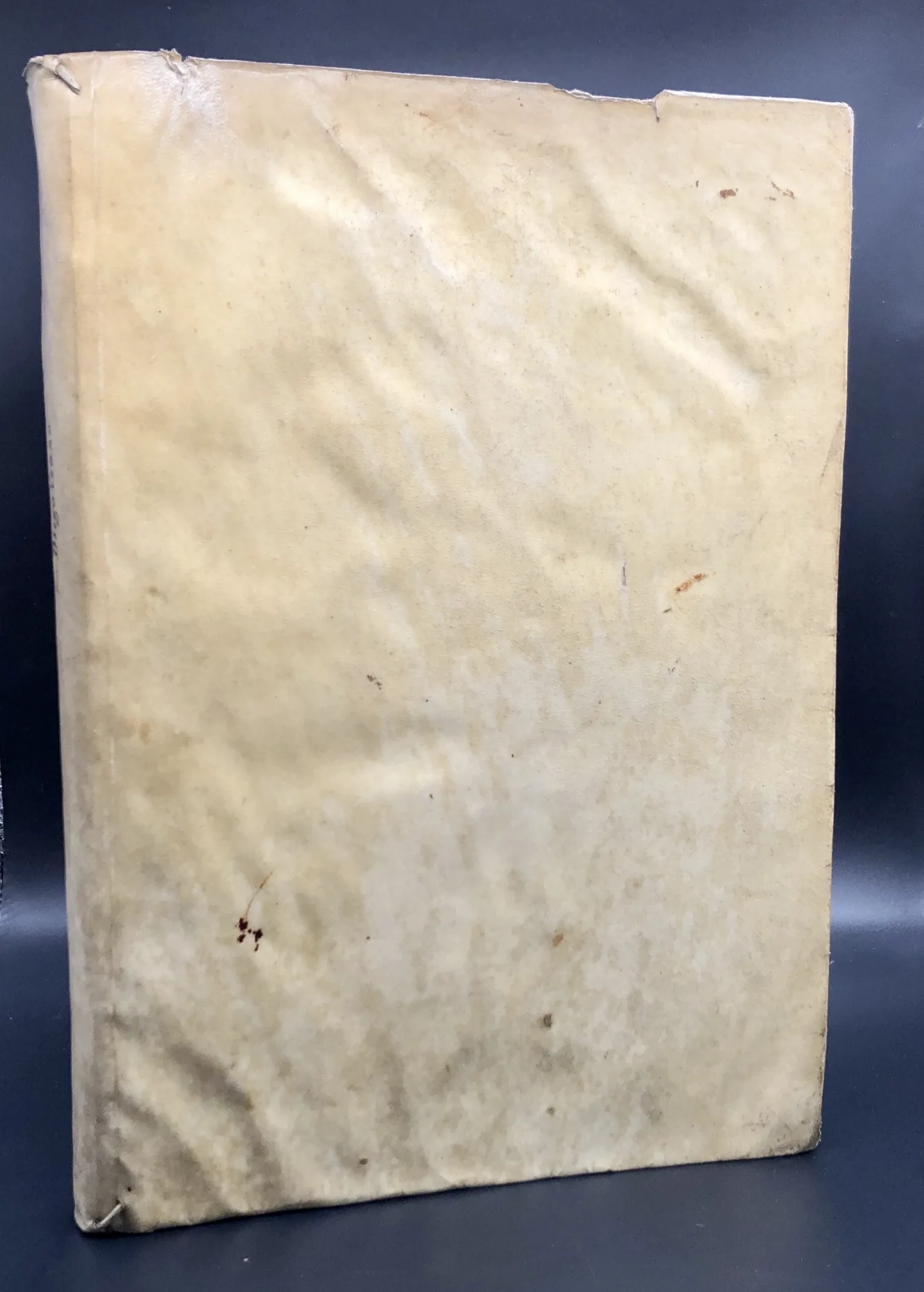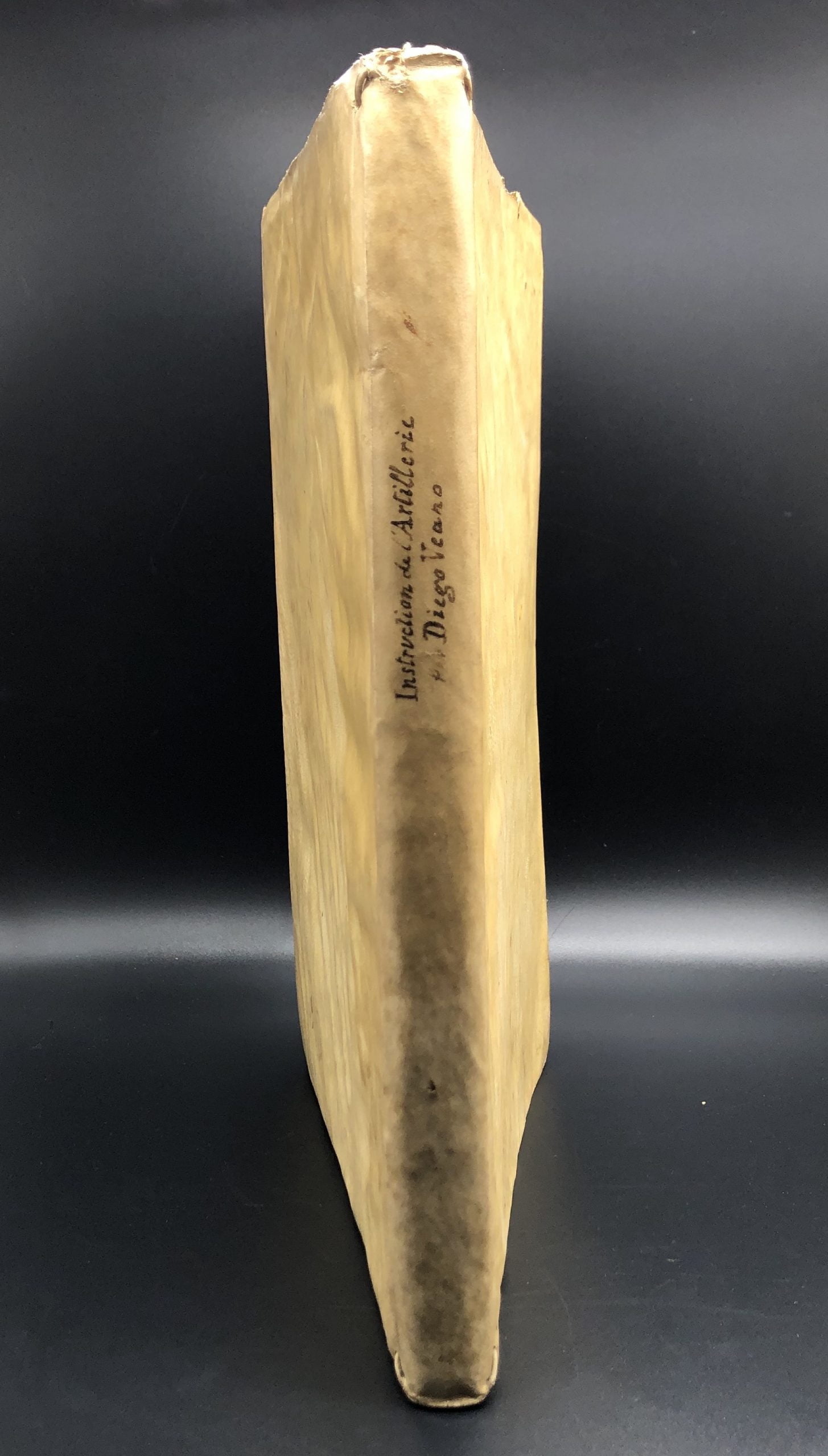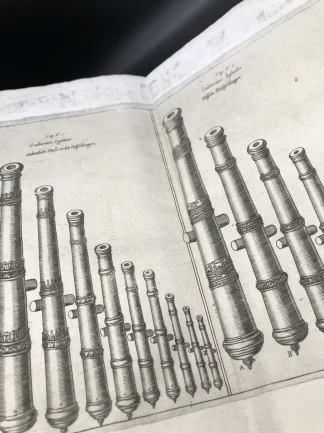UFANO, Diego
Artillerie, ou vraye instruction de l’artillerie et de ses appurt-enances
Rouen, Jean Berthelin, 1628£2,750.00
Folio. pp. (vi) 144, 6 [ii] last blank, 27 numbered engraved plates, (18 double-page) and one unnumbered. Roman letter. Title within fine engraved border , figures of War and Peace at sides, Victory above, arms below, woodcut initials, grotesque head and tail-pieces, with the additional quire “Quelques advertissemens dependans de l’artillerie”, contemporary limp vellum, engraved armorial bookplate of ‘Whyte Melville, of Bennochy and Strathkinness,’ (perhaps John Whyte Melville, 1797-1883). Light age yellowing, the very rare spot or mark. A very good, clean copy, with excellent impression of the plates, in contemporary limp vellum.
A fine copy of one of the most famous books on the history of artillery, beautifully illustrated with 28 plates. Diego Ufano was a 16th-century Spanish military engineer with much experience in war in Spanish Flanders. This work was particularly influential in England; Robert Norton the English author of “The Gunner” was especially indebted. Translated by Johann Theodor de Bry (see Cockle), with plates copied in reverse by de Bry from the Spanish edition, De Bry also translated the work into German, and the plates are captioned in both languages. Ufano’s most important contribution to the subject was this work on Artillery which details in depth 16th-century guns, cannon, rockets and ammunition. His notes and observations on gunners were well ahead of their time; they paint a very accurate view of warfare and tactics at the turn of the C16th. This book detailed notes on how to clean, load, aim, and fire muzzle-loading firearms to the beat of a drummer’s drumroll. It also describes how to move cannons up a mountain, the manufacture of cannon, and references the use of cannon in the Philippines, China, and Tartary.
“Diego Ufano, a Spanish captain of artillery who was in Antwerp early in the seventeenth century, describes the Spanish artillery used in the Low Countries. He also describes and figures an explosive bullet. It is a hollow ball filled with gunpowder, having a hole into which is inserted a tubular fuse, which is perforated; it is not said whether it is of wood or metal. The bomb or shell was not previously used in the war in the Low Countries but had been tried. Ufano also describes pots with narrow necks, filled with inceniary and bullets, which were thrown by cords and were (apparently ) fitted with wicks to ignite the contents. He describes a grenade containing the bomb in a spherical case with a cord, an incendiary arrow thrown from a crossbow, and a ‘trombe a feu’ (called a ‘bombe’ in the French transaltion) consisting of a cylinder into which the composition is pressed by a wooden stick. .. He also describes rockets (fusées volantes) in great detail, and a petard for blowing open an armoured door.” J. R. Partington. ‘A History of Greek Fire and Gunpowder.’
In his work Ufano describes a method used for salvaging guns from under water, which had to be recovered after being lost when armies crossed rivers. The illustration shows one of the earliest depictions of a diver, using a large hood made of cow s hide. A respiration tube was connected to his helmet and was kept above his head by a pig s bladder, allowing the diver to work a few meters under water.
Cockle 684. Palau 342947. USTC 6814649 (listing 3 copies).In stock


